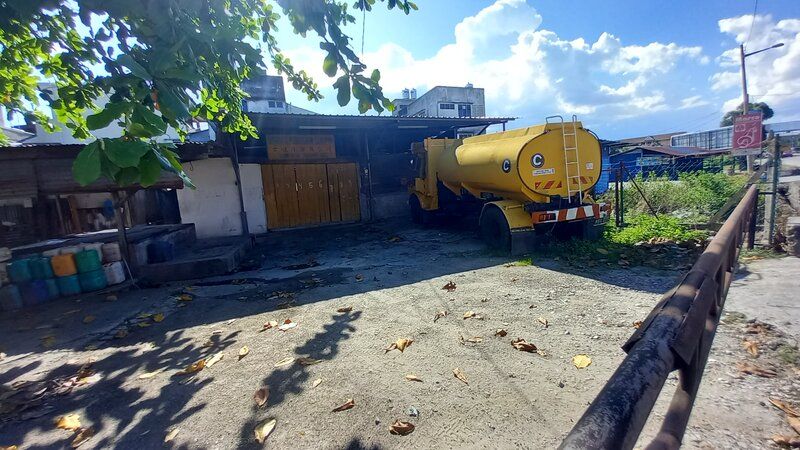Identifying and Addressing an Oil Leak While on the Road

That puddle isn’t from the rain. Oil leaks pose a significant risk to human life and the environment. More frequently, they endanger your livelihood, as ignoring a minor leak can lead to larger, more expensive engine trouble.
Here are the signs you shouldn’t miss and what to do.
Signs of an Oil Leak
Often, your dashboard’s check engine light is your first indication that something is amiss. Your oil pressure warning light may also appear. However, this system, like any automotive component, isn’t foolproof. You should also look out for these additional signs of trouble:
- Oil puddles that collect beneath your car when you stop.
- Blue smoke coming from your tailpipe or beneath your hood. The latter is a sign to pull over immediately.
- Engine knocks or overheating signifying trouble under the hood. When your engine lacks oil, your pistons may grind from insufficient lubrication and the engine can seize up. The resulting repair can cost thousands.
- Low oil levels indicated on your dipstick when you routinely check your oil.
- A burning oil smell can also indicate trouble.
What’s perhaps most crucial is addressing these warning signs. Some seasoned truck drivers grow a little too comfortable driving with the check engine light on. It’s understandable to have to triage among various life concerns, but postponing a fix could cost you big time. It could even result in an engine fire, damaging countless vehicle components and even necessitating a replacement.
Causes of Oil Leaks
Many engine components may contribute to your oil leak, including the following:
- Broken and worn-out seals
- Worn oil filters
- Loose or overly tight filters and drain plugs
- Extreme driving conditions, which can loosen nuts and bolts around your oil pan
- Cracked or damaged gaskets
- Oil pan damage
- Bad oil filler cap
- Oil cooler line damage
- Overfilling your oil when performing routine maintenance
You can prevent many of these causes of oil leaks with regular maintenance. Follow your manufacturer’s recommendations for taking care of your vehicle. Routine inspections catch issues like worn seals and filters before they create significant problems.
Addressing Oil Leaks Along the Roadside
Routine maintenance also prevents the trouble you may have identifying and addressing oil leaks while on the road. In general, you should avoid pulling over to address a leak unless you see smoke billowing from your engine. Passing traffic poses too much of a risk.
However, you might be able to perform a little wrench-turning magic at the next truck stop. Ensure you carry the right supplies with you to fix problems resulting from loose nuts and bolts, as well as readily replaceable parts. It’s a good idea to keep the following with you:
- A tarp or ground cloth to keep from getting filthy and protect against broken parking lot glass
- A torque wrench and socket set
- A drain pan for collecting old oil
- A jack and stands sufficient for your vehicle
- Extra engine oil
Take the following steps when addressing oil leaks while on the road.
1. Tighten or Replace the Oil Drain Plug
Ensure you torque the oil drain plug to the manufacturer’s specifications. Some truck stops sell these if you need a replacement.
2. Inspect and Replace the Oil Pan and Gasket
The nuts and bolts holding your oil pan in place can wiggle loose over challenging terrain. Furthermore, your pan could develop rust and corrode, which can lead to leaks and engine damage. Fortunately, many truck stops sell these as well. Welding can sometimes fix small cracks, but your best bet is usually replacement.
The problem may also be with your gasket, the rubber or silicone bit between your oil pan and the mount. You’ll generally know upon removal if it caused the issue — it should be springy, not dry and cracked. Replace it if necessary before remounting your oil pan.
3. Inspect and Replace the Oil Filter
Locate your oil filter and place your drain pan beneath it. Remove it and let the oil drain into the pan after loosening it before completing retrieval. Pay particular attention to the gasket. Failure to remove the old one prevents a tight seal and can perpetuate the problem.
Use your torque wrench to tighten the replacement to the correct strength. Apply a light coating of oil around the rubber gasket to create a better seal.
When to Head to the Shop
Sometimes, you can’t locate the leak source or need access to better tools than you’ll find at the average truck stop. For example, your mechanic can use a special dye to identify the problem. Taking your vehicle to the shop means keeping it in good condition to drive another day — book your appointment without delay if the above fails to rectify the problem.
Identifying and Addressing Oil Leaks
Oil leaks pose health and environmental risks while threatening your vehicle’s engine life. Taking the right steps to address them while on the road ensures you keep on trucking.
Author Bio: Oscar Collins is an auto writer with over five years of experience in the industry. He has bylines at Carwash, Global Trade Mag and InAutomotive. Follow him on X @TModded for frequent updates on his work.









